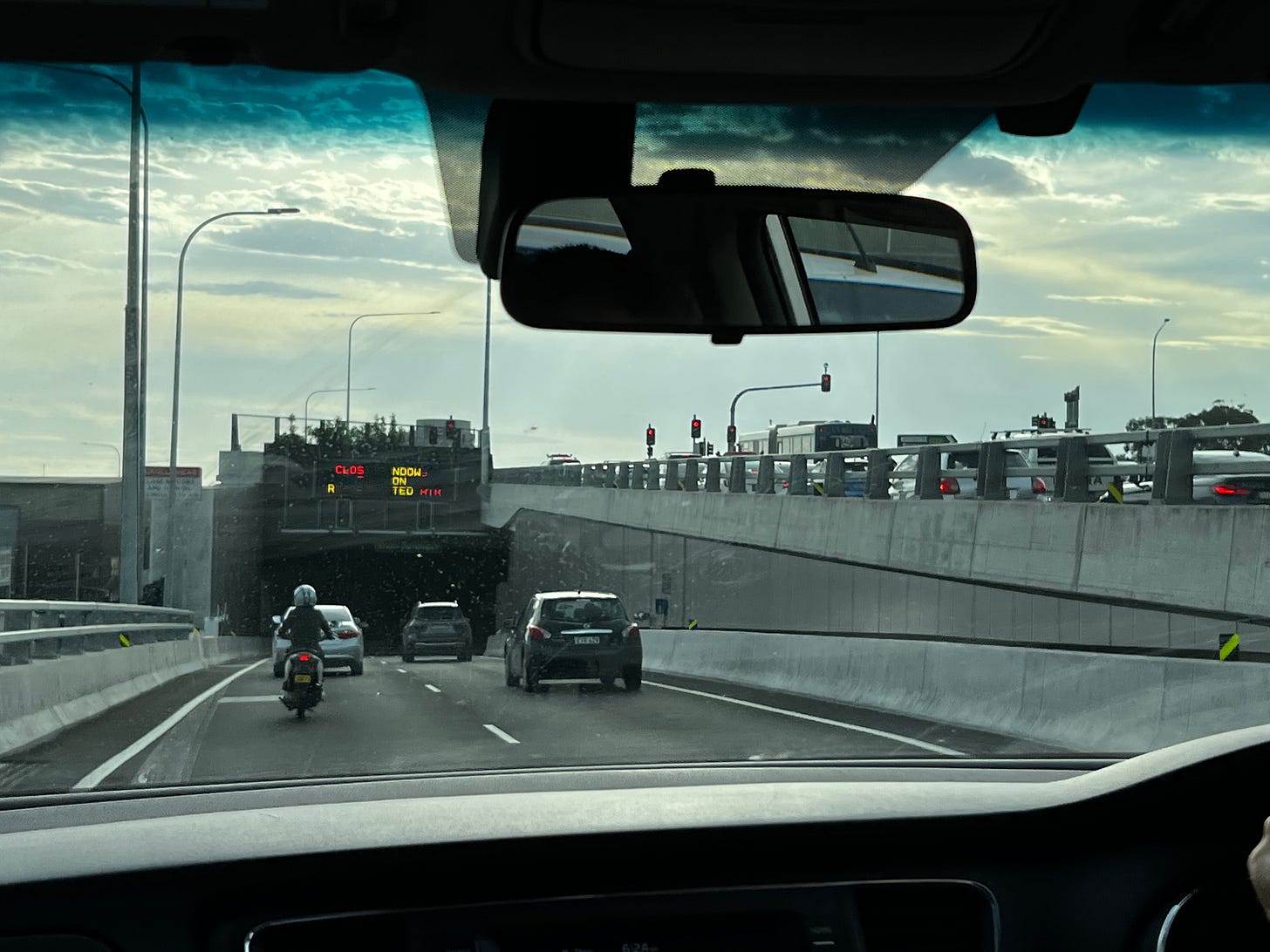Sydney Toll Roads Need a Holiday
When Minnesota’s Department of Transport darkened every one of the Twin Cities’ 430 ramp meters for what was intended to be four weeks in October 2000, the result was perhaps the largest ‘natural experiment’ in the history of transport science. Freeway speeds fell, travel times rose, and crashes spiked, giving planners and engineers evidence on how metering worked. But it also showed the inequities of the system, how meters favoured suburban motorists over those living in the city. I had the opportunity to study the effects of ramp metering with my students and colleagues, and the experiment was invaluable for designing the replacement that was to come.
Sydney can and should run the same sort of test on money rather than on signals: suspend motorway tolls for a month, and watch how traffic behaves.1
Sydney’s tolled maze
Sydney now perhaps has the world’s densest network of tolled urban motorways. Thirteen separate concessions, eleven of them run by Transurban, cover roughly 130 km of road, from the Hills M2 in the north-west to the Airport-bound M8 and the twin harbour crossings in the east.
Toll contracts stretch decades. The M5 South-West converts to a WestConnex concession in 2026, then runs to 2060; the brand-new M4-M8 Link has the same end date. The state tries to soften the sting with a $60 weekly cap, yet that rebate ends in January and the government concedes it is “very expensive.”(Daily Telegraph)
This patchwork pricing pushes detouring traffic into untolled arterials, slows buses, and leaves the public guessing what each trip will cost. Reform is under way, Parliament has backed a plan to merge the separate concessions into one network, introduce two-way tolls on the harbour crossings, and adopt a declining per-kilometre rate, but the data to set those rates remain thin.
Why a toll holiday?
A one-month2 school-term “free travel” period on every tolled motorway would reveal the network’s suppressed demand. Compare hourly flows, speeds, and route choices with the month before and the month after, as well as the same month from the previous year, and a number of questions answer themselves:
How much traffic has the price kept away?
Which corridors store the most latent demand?
What level of crowding appears acceptable once cost is removed?
How much does traffic fall on surface streets?
What happens to road safety overall?
With those numbers in hand, TfNSW, IPART, and Treasury can calibrate future tolls to hit explicit flow or revenue targets, not educated guesses. The study would also give clearer evidence when renegotiating long concessions.
Price the time, not the road
Traffic peaks by the clock, not by distance. A peak-hour toll that reflects the queue people impose on one another, coupled with a shoulder-period discount, can flatten the demand curve more cheaply than adding lanes, and every transport economist I know would support tolls that vary by time-of-day or congestion level. Off-peak near-zero prices keep the asset working all day, improve freight reliability, and reward travellers who can shift trip times. The holiday would show where the peaks lie when prices disappear.
Price every road
Charging only motorways shunts congestion onto streets never designed to be relief valves. A distance-based charge (per vehicle km traveled, varying by time of day) on the whole network — from motorways to surface streets — would treat every driver the same and replace the shrinking fuel excise as cars electrify. The extra coverage also lets tolls fall: a few cents per kilometre across all roads raises the same revenue as today’s high motorway charges but without inducing drivers onto long detours to dodge gantries.
Sequence for reform
Run the toll holiday and publish every data file openly.
Re-introduce motorway tolls with clear distance-based, time-of-day varying rates derived from observed demand.
Expand distance-based charging to the entire street, road, highway and motorway network, charging more during peak times.
Minnesota learned more about ramp meters in two months of darkness than from years of modelling. Sydney can do the same for tolls, then set fairer, simpler prices for every kilometre driven.
Ramp Metering References
Zhang, Lei and David Levinson (2010). Ramp Metering and Freeway Bottleneck Capacity. Transportation Research part A 44(4) 218-235. [doi]
Levinson, David and Lei Zhang (2006) Ramp Meters on Trial: Evidence from the Twin Cities Metering Holiday. Transportation Research part A 40(10) 810-828. [doi]
Zhang, Lei and David Levinson (2005) Balancing Efficiency and Equity of Ramp Meters. ASCE Journal of Transportation Engineering 131(6) 477-481. [doi]
Levinson, David and Lei Zhang (2004) Evaluating Effectiveness of Ramp Meters: Evidence for the Twin Cities Ramp Meter Shut-off. (145-166) in Assessing the Benefits and Costs of Intelligent Transportation Systems (ed. David Gillen and David Levinson) Kluwer Publishers.
Levinson, David and Lei Zhang (2003) Travel Time Variability After A Shock: The Case Of The Twin Cities Ramp Meter Shut Off. in The Network Reliability of Transport (ed. Yasunori Iida and Michael Bell) Pergamon.
FIN
Keep reading with a 7-day free trial
Subscribe to Transportist to keep reading this post and get 7 days of free access to the full post archives.


